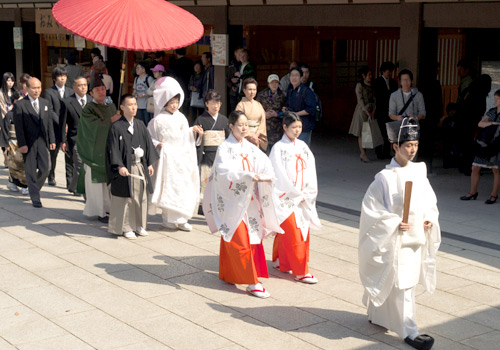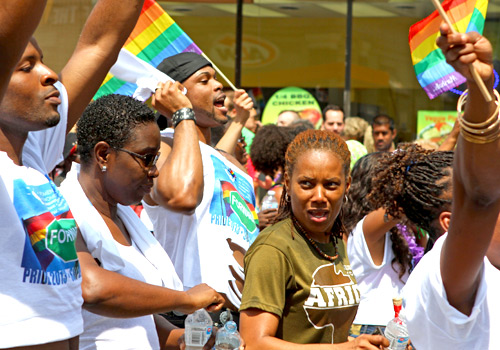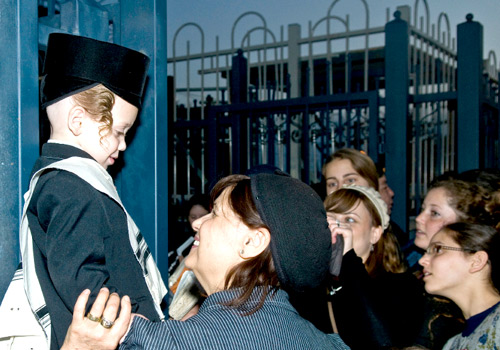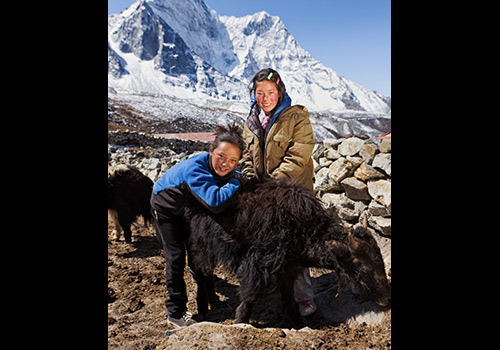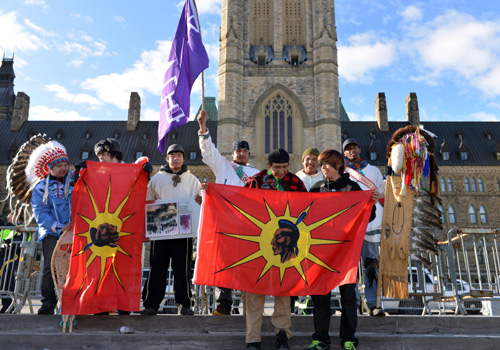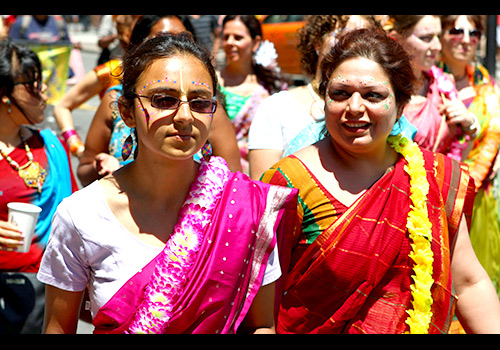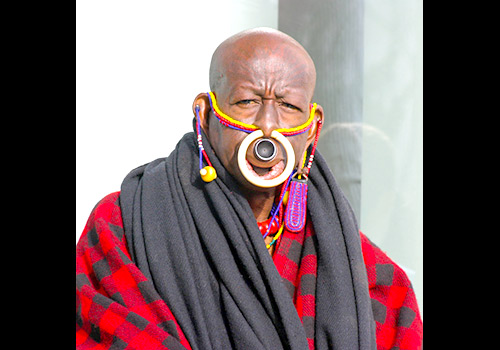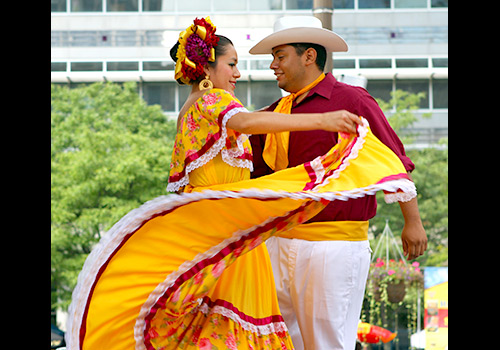Introduction
Why am I the way I am? Where am I from? Why do I eat the foods that I do? What does a family look like to me? How do I know I am “all grown up”? Why do I, or don’t I, practise a religion? These are all questions that will be addressed in this course.
Welcome to the World Cultures course!
Take a look at this picture of a Persian rug.
Note the many interwoven threads that make up the final product.
Sometimes there are pictures in the fabric. Sometimes there are just patterns. Sometimes there are messages or symbolism in the graphics, and sometimes it is just artful design.
Many different materials, like silk, cotton, and wool are used in creating a tapestry.
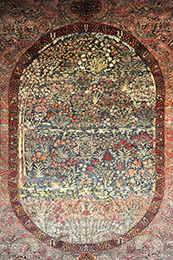
Now think about yourself. You are a tapestry. You are made up of many different threads of knowing and being. Your immediate family, your extended family, your heritage, your community – these are all threads that are woven together to create a very unique you.
The process of weaving is painstaking. It takes time and perseverance to create this beautiful work of art. You have been going through a similar process: It has taken years, maybe even decades, for you to emerge.
This course will explore the nature of all those threads that weave together to create a life story. We will examine the nature of culture, how we learn our own culture, how it is maintained, and how it evolves.
You will learn about the theories used to analyze culture, with an emphasis on religious and spiritual rituals and beliefs, and about /the conflicts that can arise from clashing cultures and inter-generational stresses.
You will be introduced to a number of cultural groups throughout the course, and this will likely broaden your understanding of what it is like to move from one culture to another.
In addition to reading, researching, and writing, you will also design a social action project. This will be your opportunity to create your own thread to weave into your cultural life, to create what you think would be a positive addition to cultural diversity in your world.
Come along, it’s time to learn the story of culture!
We all should know that diversity makes for a rich tapestry, and we must understand that all the threads of the tapestry are equal in value no matter what their color.
– Maya Angelou
What you will learn
After completing this lesson, you will be able to:
- demonstrate an understanding of the elements of culture associated with various definitions of the term
- analyze various functions of culture
- describe multiple ways in which culture can influence an individual’s perceptions, attitudes, and behaviours, and can shape social institutions and practices
- demonstrate an understanding of how an individual’s cultural identity is socially constructed
- analyze various types of tensions that can occur between individuals and their collective culture
- explain the major ideas related to the study of culture of leading figures in the humanities and social sciences
Reader Journal
A day in my life
Your alarm has just woken you up. You have a big day ahead of you!
Read “A day in the life of me (Opens in new window),” one entry of an online blog/journal.
The writer is Sharon Howard; she describes herself as a “30-something mom of two teenagers, part-time carer, part-time student” blogger. As you skim through it, consider how you would compose your own “Day in the life of me” journal entry if you were asked to do so. (Hint: You will be asked to do so.)
Take a moment to jot down all the things you will do to get ready for your day.

Notebook
Now, write down what kinds of tasks you will perform during your day. Choose 10–15 things.
When the time comes to prepare the evening meal, think about what you will eat. Where will you eat it? With whom will you eat? Is there dessert? What will happen during the meal (talking, silence, argument, television, texting, reading, etc.)?
Then, perhaps you’ll have a few hours in the evening where you don’t have any commitments. How will you spend your free time?
You now have a long list of what constitutes a “normal” day for you. Go back over this list and put a star beside what might reveal what gender you are.
Now, put another symbol beside what might reveal what ethnic or religious group you are associated with.
Put a third symbol beside the events or tasks which might reveal what nation you live in.
Many of these notations are the threads that create the cultural tapestry of your life.
Reflect back on the influences on your daily choices: Why did you eat what you did? Why and how did you choose the place where you ate? Why did you transport yourself to work (or possibly school) in the manner that you did?
How many of your daily decisions and interactions with others were influenced by your culture? In other words, how did the details of where you live and who your family is impact your choices?
Do your cultural influences help you to “fit in,” or do they make you feel different from others?
If you woke up in another country – like France, or Vietnam, or Kenya (or some other nation you have some knowledge of), imagine how your daily routine might be different. For example, in some rural villages in Africa, you would be up at dawn and walking a long distance to fetch water for your family. In some parts of the world, if you are a girl, school may not even be an option for you due to cultural beliefs and/or the precedence that numerous other tasks which you must complete for your family take. In yet other parts of the world, the work day could be hours longer than what you are used to.
Next we will meet an individual who struggles to mesh her cultural heritage with her dominant culture.
Watch This!
Who am I?
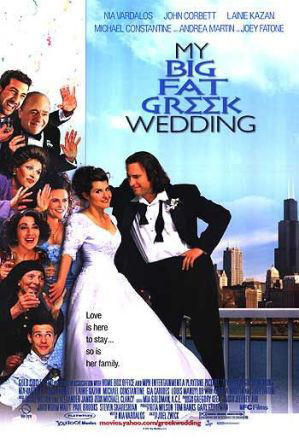
Meet Toula.
She is the middle child of a Greek-American family. Throughout the film My Big Fat Greek Wedding, Toula struggles to figure out how to be both Greek and American, sometimes with amusing results. Her reflections on how it feels to be a member of her family and to reconcile two different cultures offers an interesting commentary on cultural learning.
Using your favourite movie provider, find the 2002 Nia Vardalos film My Big Fat Greek Wedding. Before you start watching, review the questions below.
Self Check
Check your understanding
How does the music set the mood?
What examples does the main character give for stating that she knew she was "different" growing up?
The music is distinctly traditional Greek style. Music is a part of cultural identity.
Toula noticed that she looked different and ate different foods.
What are the three things that Toula, the main character, says her father told her?
How does the main character's family "teach her" about her culture?
Her father wants her to marry a Greek boy, make Greek babies, and feed everyone.
Toula's family sends her to Greek school, not Brownies.
Note the detail at 2:30 minutes. What does the main character do for her father as they enter the restaurant? What does this say about the culture in her family (if not in traditional Greek culture as a whole)?
By six minutes into the film, what seems to be the most important cultural value taught to the girls?
At two minutes and 30 seconds, Toula takes her father's coat and hangs it up. She was taught, as part of Greek culture, to show respect for elders. As a result, children must obey and serve their parents.
Girls must get married!
How was her boyfriend's experience of getting acquainted with his own culture and cultural norms different from hers?
What did Toula have to do in order to find happiness?
He is an only child who is very quiet, with emotionally remote parents.
She needed to accept her cultural heritage - not continually feel ashamed of it. She had to figure out how to integrate it with what made sense in her own life.
Note down several other cultural characteristics that Toula is taught about her cultural heritage. Remember that this is not an exercise about specific examination or description of individual family members (for example, her father thinks Windex heals any ailment). Your focus should remain on the broader messages about how to live one's life according to cultural factors, what to value, what to strive for, etc.
How did Toula's cultural heritage create challenges for her in a different dominant culture, in this case the United States? How did she have difficulty "fitting in"?
Can you provide an example of your own, or from someone you know, that involves trying to reject a part of your/their cultural heritage in order to fit in? Describe the situation and the consequences that resulted from that rejection.
Culture is experienced individually, as in Toula’s perspective, but it is also something that’s experienced by us all and, conversely, affected by the perspective of others from another culture.
As we have seen with Toula’s case, conflict can occur within oneself as two cultures struggle for dominance.
Next we will look at some other aspects of cultural creation, and we will explain the importance of understanding one’s own culture as well as being open to other cultures.
Notebook
Personal work and journal
You have noted how one individual was taught about her culture and how she experienced her cultural heritage.
Now you will create a journal entry about how you feel you express your cultural heritage through your personality.
For example: I feel that am/I am not a typical Canadian (or French Canadian, or Japanese-Canadian, etc.) because…
During this course, you will be completing assignments like this one that you will have to save on your computer in a folder called “Personal work and journal.” Create this folder now.
At the end of the course, you will have built a very valuable body of work that you can use if you decide to further your education or that you can show to future employers if you choose to enter the workforce.
Now, begin your reflection piece by using one of the following prompts. Journal entries such as this one should be one page long (around 250 words).
- My personality and way of life reflect my cultural heritage because…
- My personality and way of life do not reflect my cultural heritage because…
- The dominant culture in the country I live in affects my daily routine because…
- I have always felt connected to/disconnected from the culture which is dominant where I live because…
Your piece should include how you think your cultural heritage is expressed in your daily life, the decisions you make, the actions you take, your tastes, and your personality. You should write about how close you feel to the culture(s) which you have inherited from your ancestors, or how disconnected you feel from it. It could of course also be a mixture of both.
Now, we will begin to look at defining culture.
What makes a culture a culture?
Take a look at the following images. Take note of your thoughts while you look at them.
How do these images reflect the notion of culture?
Think
Now let’s take a look at some definitions of culture.
Culture: learned and shared human patterns or models for living; day-to-day living patterns. These patterns and models pervade all aspects of human social interaction. Culture is mankind’s primary adaptive mechanism (p. 367).
– Damen, L. (1987). Culture Learning: The Fifth Dimension in the Language Classroom. Reading, MA: Addison-Wesley.
Culture is the collective programming of the mind which distinguishes the members of one category of people from another. (p. 51).
– Hofstede, G. (1984). National cultures and corporate cultures. In L.A. Samovar & R.E. Porter (Eds.), Communication Between Cultures. Belmont, CA: Wadsworth.
By culture we mean all those historically created designs for living, explicit and implicit, rational, irrational, and nonrational, which exist at any given time as potential guides for the behavior of men.
– Kluckhohn, C., & Kelly, W.H. (1945). The concept of culture. In R. Linton (Ed.), The Science of Man in the World Crisis. New York. (pp. 78–105).
Culture is the shared knowledge and schemes created by a set of people for perceiving, interpreting, expressing, and responding to the social realities around them (p. 9).
– Lederach, J.P. (1995). Preparing for peace: Conflict transformation across cultures. Syracuse, NY: Syracuse University Press.
A culture is a configuration of learned behaviors and results of behavior whose component elements are shared and transmitted by the members of a particular society (p. 32).
– Linton, R. (1945). The Cultural Background of Personality. New York.
Culture … consists in those patterns relative to behavior and the products of human action which may be inherited, that is, passed on from generation to generation independently of the biological genes (p. 8).
– Parson, T. (1949). Essays in Sociological Theory. Glencoe, IL.
Culture has been defined in a number of ways, but most simply, as the learned and shared behavior of a community of interacting human beings (p. 169).
– Useem, J., & Useem, R. (1963). Human Organizations, 22(3).
Which definitions do you like the best? Why?
Which one did you like the least? Why?
Making distinctions
How is a culture different from a society?
The article you will read next states that culture is the “full range of learned human behaviour patterns.” How, in your opinion, is that different from a society?
Here is one definition of a society:
A society is defined as a system of human organizations generating distinctive cultural patterns and institutions and usually providing protection, security, continuity, and a national identity for its members.
Source: http://www.thefreedictionary.com/society
So, as we begin this course and look to define our paradigm clearly, let’s agree that a society is most often to be understood as being connected to a nation, which provides various institutions (schools, policing, a government) which “socialize” its members and encourages them to behave and think in certain general, accepted ways. Society provides the framework in which the day-to-day nuts and bolts of living one’s life takes place in accordance with the institutions that are needed to support one doing so.
Here is another definition of society:
Society is referred to as a group of people who share common area, culture and behavior patterns. Society is united and referred as a distinct entity. Society consists of a government, health care, education system and several occupations of people. In a society each and every individual is important because each individual can contribute something to the society.
Source: http://www.differencebetween.net/miscellaneous/difference-between-culture-and- society/#ixzz2k0GSn5hd
Culture focuses more deeply on beliefs, traditions, and inter-generational learning.
With our world now becoming smaller, as we live in a global village where distance has been almost conquered by speed and technology, where people travel widely and relocate more often than at any other time in history, a sense of “blending” one’s culture into one’s society is becoming commonplace. This explains the hyphenated identity of many of us: Jamaican-Canadian, Mexican-American, or Arab-American. One label notes cultural heritage and one identifies nation affiliation.
Read
What is culture?
Let’s do a little reading on the different aspects of what a culture is. Read the article “What is culture?” and answer the questions that follow.
Self Check
Check your understanding
What is the agreed-upon understanding of culture for anthropologists and other behavioural scientists?
Culture is powerful but fragile. Explain.
For anthropologists and other behavioural scientists, culture is the full range of learned human behaviour patterns.
Culture is a powerful human tool for survival, but it is a fragile phenomenon. It is constantly changing and easily lost because it exists only in our minds. Our written languages, governments, buildings, and other artifacts are merely the products of culture. They are not culture in themselves.
When was the term "culture" first used in this anthropological way, and by whom?
What are the three layers, or levels, of culture?
The term was first used in this way by the pioneer English anthropologist Edward B. Tylor in his book Primitive Culture, published in 1871.
First is your specific society (shared language, societal traditions, and beliefs); second is your subculture; and third, your cultural universals or “human cultural” traits.
How has Tylor impacted the study of anthropology?
What is a shared language?
Since Tylor's time, the concept of culture has become the central focus of anthropology.
A shared language is a language, a system of communication, which is shared by members of the same group, culture, nation, etc. Shared languages include sign language, or Japanese, or Greek, for example. Those who share your language or national culture do so because they acquired it as they were raised by parents and other family members who have it.
Provide an example of a subculture.
What are cultural universals?
Easily identifiable subcultures in Canada include ethnic groups such as Chinese-Canadians, Caribbean-Canadians, and Mexican-Canadians. Members of each of these subcultures share a common identity, food tradition, dialect or language, and other cultural traits that come from their common ancestral background and experience.
These are learned behaviour patterns that are shared by all of humanity collectively. No matter where people live in the world, they share these universal traits.
Provide an example of a subculture that has "all but disappeared" in the U.S. or Canada.
Provide a couple of examples of what a cultural universal looks like.
The article "What is Culture?" mentions both Irish and German subcultures. Other nearly vanished subcultures in Canada include early immigrant groups from the Netherlands, Wales, or perhaps Loyalists (who loeft America when it parted ways with Britain).
You may have chosen any examples from the list of 12 in the "What is Culture" article.
Refer back to My Big Fat Greek Wedding and provide an example of each of the layers of culture" A) Specific society, B) Subculture, and C) Cultural universals.
Think about your culture. Are you a fourth-generation Canadian, a newly arrived immigrant, or are you from a mixed cultural background, like Toula? She would be considered a first-generation Greek-American because her parents were born in Greece, but she was born in the U.S. Apply the three layers of culture to your life: A) Specific society, B) Subculture, and C) Cultural universals.
Culture is experienced individually, as in Toula’s perspective, but it is also something that’s experienced by us all and, conversely, affected by the perspective of others from another culture.
As we have seen with Toula’s case, conflict can occur within oneself as two cultures struggle for dominance.
Next we will look at some other aspects of cultural creation, and we will explain the importance of understanding one’s own culture as well as being open to other cultures.
Better or best?
North American culture, or more generally, Western culture, teaches its members that competition is necessary in order to achieve success. That desire to be better or the best drives individuals to reach for excellence. The notion of “competitive spirit” is, some would say, a fundamental part of human nature. There will always be those who are better, or who do better (a.k.a., the winners) than others who are not as good, or don’t do as well (a.k.a., the losers). The economic system of capitalism is based on competition. Sports are competitive.
Theorists may argue that the notion of competition has its basis in nature, but there is no argument that validates the idea that competition and judgement are a part of Western culture at all.
When it comes to culture and cultures in general, the danger lies in the tendency to view a culture as better or worse than another one.
On that subject, consider the following quote by Canadian “Explorer in Residence” at the National Geographic Society, Wade Davis. You will be watching a short lecture by him later in this lesson.
The world in which you were born is just one model of reality. Other cultures are not failed attempts at being you; they are unique manifestations of the human spirit.
– Wade Davis
Wade Davis holds degrees in anthropology and biology, and received his Ph.D. in ethnobotany, all from Harvard University. He is the author of 17 books, including the best sellers The Serpent and the Rainbow (1986), One River (1996), and The Wayfinders (2009). His book Into the Silence was awarded the 2012 Samuel Johnson Prize, the most prestigious prize for literary nonfiction in the English language. Davis is an Explorer in Residence at the National Geographic Society.

How does the Wade Davis quote above contradict the concept of competing cultures, the idea that some cultures might be better than others?
Culture is a construct, or a creation. They are different ways of knowing and being, not inherently better or worse than one another.
Definition
Considering one’s culture superior to another culture is referred to as ethnocentrism.
Ethnocentrism: 1. the belief in the inherent superiority of one’s own ethnic group or culture. 2. A tendency to view alien groups or cultures from the perspective of one’s own.
Source: http://dictionary.reference.com/browse/ethnocentrism
Make the connection
Give an example from My Big Fat Greek Wedding where Toula’s father demonstrated ethnocentrism.
In the car, while trying to determine the Greek root of every word possible, displaying the Greek flag on the garage door, continually stating that Greeks invented everything, etc. It is debatable whether this was just cultural pride or the belief that Greek culture was better than other cultures.
Think
Reflect
Can you provide an example from your own life when you may have judged another culture as “weird” or regarded your culture as “better” than another one in some way?
What problems could arise if millions of people located in one place thought that their way of life was superior to that of another group living in a different part of the world?
Possible answers could include: War, general disrespect, prejudice and discrimination, a lack of care and concern for problems that the group deemed inferior may face – be it famine, disease, invasion, etc.
Read
Let’s turn our attention to Wade Davis again. Read the following articles that talk about Wade Davis and his beliefs about how “storytelling can change the world” and how we can “find a way for all gardens to flourish.” After you read the articles, what do you think about terms such as adaptive choices, ethnosphere, and ethnocentrism?
Conflicts in a global culture

Conflict in today’s world can often come from cultural misunderstandings, or rapid and uncomfortable change. The following quotes are from the United Nations Population Fund website. They address the global cultural challenges of today. Think about what each writer is trying to say about culture in a global context.
Quotation #1
Tolerance, inter-cultural dialogue and respect for diversity are more essential than ever in a world where peoples are becoming more and more closely interconnected.
– Kofi Annan, Former Secretary-General of the United Nations
Quotation #2
People of different religions and cultures live side by side in almost every part of the world, and most of us have overlapping identities which unite us with very different groups. We can love what we are, without hating what – and who – we are not. We can thrive in our own tradition, even as we learn from others, and come to respect their teachings.
– Kofi Annan, Former Secretary-General of the United Nations
Quotation #3
In this time of globalization, with all its advantages, the poor are the most vulnerable to having their traditions, relationships and knowledge and skills ignored and denigrated, and experiencing development with a great sense of trauma, loss and social disconnectedness.
– James D. Wolfensohn, World Bank President.
Source: http://www.unfpa.org/culture/quotes.htm
Notebook
Personal work and journal
Use the table “Conflict in today’s world (Opens in new window)” to re-write each quote in your own words.
Save your table in your “Personal work and journal” folder.
With all of the inputs you have from this lesson, create your own working definition, or understanding, of what culture is. Remember to go back to Tylor’s concepts and Davis’s interpretation of value.
To me, culture is:
Conclusion
In this lesson, you have examined the elements that form a culture and the various functions that a culture can fulfill in shaping who we are as individuals. You considered multiple ways in which culture can influence an individual’s perceptions, attitudes, and behaviours, and can shape social institutions and practices.
You also looked at the ways in which an individual’s cultural identity is socially constructed; at the dangers that can emanate from ethnocentrism, and the need, in an increasingly multicultural world, to remain open to and accepting of other cultures as they can teach us a lot about the world, ourselves, and our own culture. You explored several definitions of the term “culture,” and have been adventurous enough to create your own!
In the next lesson, you will look into the construction or origins of a culture.



